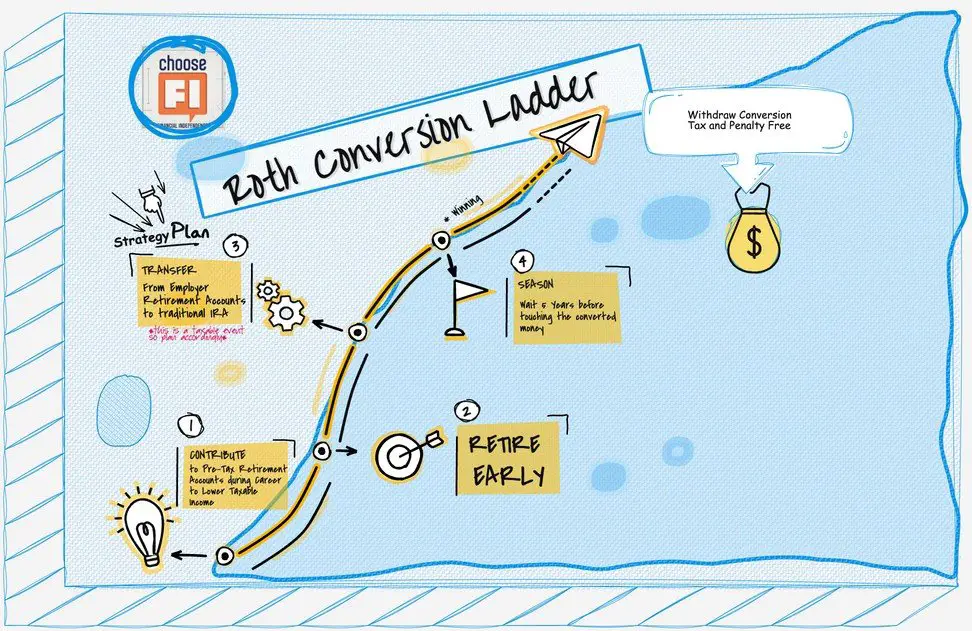Looking to set up an emergency fund and ensure your financial security? Well, you’ve come to the right place! In this blog article, we’ll provide you with some valuable tips for setting up an emergency fund that will help you weather any unexpected financial storms. Whether you’re just starting out on your financial journey or looking to enhance your existing financial safety net, these tips will give you the guidance you need. So, let’s dive in and explore the essential steps for setting up an emergency fund that will provide you with peace of mind in times of crisis.
Tips for Setting Up an Emergency Fund
Introduction
In today’s unpredictable world, having a financial safety net is more important than ever. An emergency fund provides a sense of security and peace of mind, knowing that you have funds to fall back on in times of unexpected expenses or financial hardships. Setting up an emergency fund may seem like a daunting task, but with the right strategies and discipline, you can build one that will protect you during tough times. In this article, we will explore some practical tips to help you establish and maintain an emergency fund.
Why Do You Need an Emergency Fund?
Before diving into the tips for setting up an emergency fund, let’s understand why it’s essential to have one in the first place. Here are a few reasons why an emergency fund is crucial:
1. Financial Security: Life is full of uncertainties. Whether it’s a medical emergency, unexpected car repairs, or a sudden job loss, having an emergency fund ensures you have the financial means to navigate these challenges without relying on credit cards or loans.
2. Reduced Stress: Financial emergencies can be incredibly stressful. With an emergency fund in place, you can approach unexpected expenses with confidence, knowing that you have the funds to handle them. This can alleviate anxiety and help you maintain your emotional well-being.
3. Avoiding Debt: Without an emergency fund, you may be forced to rely on credit cards or loans to cover unexpected expenses. This can lead to debt and interest payments, making it harder to get back on track financially. An emergency fund acts as a buffer, allowing you to avoid unnecessary debt.
How Much Should You Save?
Determining the right amount to save for your emergency fund can be challenging. While there is no one-size-fits-all answer, financial experts generally recommend aiming for three to six months’ worth of living expenses. This should be enough to cover essential needs, such as housing, food, utilities, and loan payments, in case of a job loss or other financial setback.
To calculate your target emergency fund amount, start by assessing your monthly expenses. Review your bank statements and bills to get an accurate picture of your essential costs. Multiply this figure by the number of months you want to cover (e.g., three or six), and you’ll have your target savings goal.
Tip 1: Start Small and Be Consistent
Building an emergency fund can be overwhelming, especially if you’re living paycheck to paycheck or have other financial obligations. However, it’s important to remember that every journey begins with a single step. Here are some tips to help you get started:
- Automate Your Savings: Set up an automatic transfer from your checking account to a separate savings account specifically designated for your emergency fund. This way, you won’t be tempted to spend the money before it reaches your savings.
- Start with Small Amounts: Even if you can only save a few dollars each week initially, it’s still progress. Over time, you can gradually increase the amount you save as you become more comfortable with your budget.
- Make Saving a Priority: Treat your emergency fund savings as an essential monthly expense, just like rent or utility bills. By prioritizing saving, you’ll be more likely to consistently contribute to your fund.
Tip 2: Cut Unnecessary Expenses
To accelerate your emergency fund growth, consider evaluating your spending habits and identifying areas where you can cut back. Here are some suggestions to help you reduce unnecessary expenses:
- Track Your Spending: Maintain a record of all your expenses for a month to get a clear picture of where your money is going. This will help you identify areas where you can make adjustments.
- Create a Budget: Develop a budget that aligns your income with your expenses. Allocate a portion of your income towards your emergency fund and track your progress regularly.
- Cut Back on Non-Essentials: Review your expenses and identify discretionary items that you can temporarily reduce or eliminate. This could include eating out less, cancelling unused subscriptions, or finding cheaper alternatives for certain products or services.
Tip 3: Maximize Your Income
Increasing your income, even by a small amount, can significantly boost your ability to save for an emergency fund. Here are a few ideas to help you maximize your earnings:
- Explore Side Hustles: Consider taking on a part-time job or freelancing to supplement your primary income. This extra income can go directly into your emergency fund.
- Invest in Self-Improvement: Improve your skills or acquire new ones that can lead to better job opportunities or promotions. Investing in yourself can pay off in the long run and increase your earning potential.
- Negotiate a Raise: If you’ve been with your current employer for a while or have achieved significant milestones in your role, it may be time to ask for a raise. Prepare a case highlighting your contributions and value to the company.
Tip 4: Keep Your Emergency Fund Separate
To avoid the temptation of dipping into your emergency fund for non-essential expenses, it’s crucial to keep it separate from your day-to-day spending accounts. Here’s how you can do it:
- Create a Dedicated Savings Account: Open a separate savings account specifically for your emergency fund. This will help you track your progress and ensure that the money is easily accessible when needed.
- Avoid Mixing Funds: Resist the urge to use your emergency fund for non-emergency purposes. It’s important to maintain the integrity of your fund and only tap into it when absolutely necessary.
- Consider High-Yield Savings Accounts: Look for savings accounts that offer higher interest rates. While the difference may be small, every bit of extra interest can help your emergency fund grow faster.
Tip 5: Reassess and Adjust as Needed
As your financial situation evolves, it’s essential to periodically reassess your emergency fund and make adjustments as necessary. Here are some instances when you should review your fund:
- Major Life Changes: If you experience significant life changes, such as getting married, having a child, or buying a home, reassess your emergency fund to ensure it aligns with your new financial responsibilities.
- Changes in Income: If you experience a decrease or increase in income, adjust your savings accordingly. If you receive a raise, consider allocating a portion of it towards your emergency fund.
- Changes in Expenses: If your essential expenses increase, such as rent or insurance premiums, you may need to adjust your emergency fund goal to ensure it adequately covers your needs.
Setting up an emergency fund is a crucial step towards achieving financial stability and peace of mind. By following the tips outlined in this article and being consistent with your savings efforts, you can establish a robust emergency fund that will provide a safety net during times of uncertainty. Remember, starting small and making saving a priority are the keys to success. With time and dedication, you’ll be well-prepared to handle any unexpected financial challenges that come your way.
How to Set up Your Emergency Fund
Frequently Asked Questions
Frequently Asked Questions (FAQs)
How much money should I save in an emergency fund?
It is recommended to save at least three to six months’ worth of living expenses in your emergency fund. This provides a financial buffer in case of unexpected events or emergencies.
How do I determine my monthly savings goal for an emergency fund?
To determine your monthly savings goal for an emergency fund, calculate your average monthly expenses and multiply it by the number of months you want to save for (e.g., 3 or 6 months). This will give you an estimate of how much you need to save each month.
Should I prioritize paying off debt or building an emergency fund?
It is generally advised to prioritize building an emergency fund, especially if you don’t have any savings in case of unexpected expenses. Once you have a small emergency fund, you can start focusing on paying off high-interest debt.
Where should I keep my emergency fund?
It is recommended to keep your emergency fund in a separate savings account that is easily accessible. Look for accounts with high-interest rates and low fees to help your emergency fund grow over time.
What expenses should I consider when saving for an emergency fund?
When saving for an emergency fund, consider all your essential expenses such as housing, utilities, groceries, healthcare, transportation, and any other necessary bills. Exclude discretionary expenses that you can cut back on during emergencies.
How often should I review and update my emergency fund?
It is advisable to review and update your emergency fund at least once a year or whenever a significant change occurs in your financial situation. This ensures that your emergency fund remains adequate based on your current living expenses.
Can I use my emergency fund for non-emergency purposes?
Ideally, an emergency fund should be reserved for genuine emergencies such as unexpected medical expenses, job loss, or major repairs. It is generally not recommended to use it for non-emergency purposes to ensure you have sufficient funds when you truly need them.
What if I can’t save enough for an emergency fund right now?
If you are unable to save enough for an emergency fund right now, start with whatever amount you can save. Even small contributions can make a difference over time. Look for ways to cut expenses and increase your savings gradually until you reach your desired emergency fund goal.
Final Thoughts
In conclusion, here are some practical tips for setting up an emergency fund. Firstly, start by analyzing your monthly expenses and setting a realistic savings goal. Secondly, consider automating your savings by setting up automatic transfers from your checking account to a designated emergency fund. Thirdly, prioritize consistency and discipline in contributing to your fund regularly, even if it’s a small amount. Additionally, explore ways to increase your income or reduce expenses to accelerate your savings. Lastly, keep your emergency fund separate from your regular savings to resist the temptation of dipping into it unnecessarily. By following these tips for setting up an emergency fund, you can establish a financial safety net to help you in times of unexpected events or emergencies.



